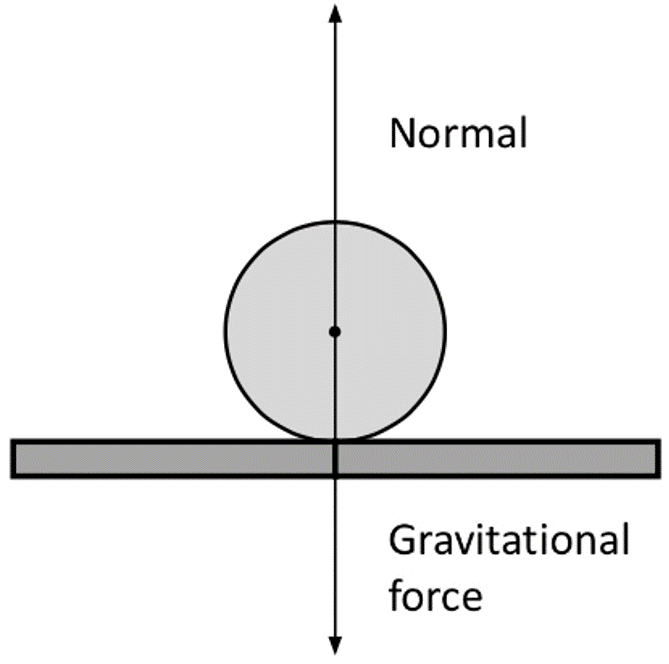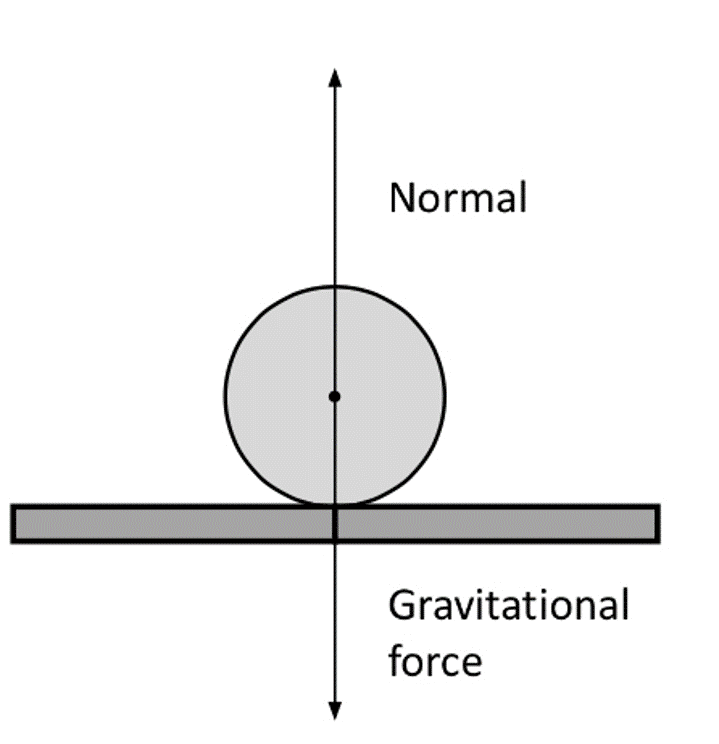Newton's Laws
Newton's Laws Revision
Newton’s Laws
Isaac Newton was famous for many theories and models in Physics. In this section we look at his three laws of motion.
Newton’s First Law


Newton’s first law states:
“A body will remain at rest or move with a constant velocity unless acted on by a resultant force”.
In the free-body diagram above, we have balanced forces acting vertically. Therefore, according to Newton’s first law, the ball will remain at rest unless an external force acts upon it.
Newton’s Second Law
Newton’s second law states:
“The resultant force on an object is equal to its rate of change of momentum”.
This is often more commonly given by the following equation:
F = ma
- F is the force in Newtons \left(\text{N}\right).
- m is the mass in kilograms \left(\text{kg}\right).
- a is the acceleration in metres per second \left(\text{ms}^{-2}\right).
In application, this means that for any object, if a resultant force is applied, the object will accelerate. It is important to note that a change in direction is also a form of acceleration. Therefore, if a force is applied an object may speed up, slow down or change direction.
We can also take from this that the acceleration experienced by the object is directly proportional to the resultant force exerted upon the object: F \propto a .
Newton’s Third Law


Newton’s third law states:
“If one body exerts a resultant force on another body, then the second body will exert an equal and opposite force back on the first body”.
This is sometimes shortened to “every action has an equal and opposite reaction”.
If we take another look at this diagram we have the gravitational force acting downwards on the object. This may also be referred to as the ball’s weight.
According to Newton’s third law, the floor then produces an equal magnitude but opposite direction force back on the ball, keeping the forces balanced. This force is known as the normal reaction force.
Newton's Laws Example Questions
Question 1: Describe one appropriate example of Newton’s first law.
[1 mark]
An object flying through space will continue to move at the same speed, in the same direction unless acted on by a resultant force.
Other examples could include a car moving at a constant speed, or a ball falling at a constant speed.
Question 2: During a car crash a 70 \: \text{kg} person is decelerated at 300 \: \text{ms}^{-2}. Calculate the force applied to the person.
[2 marks]
Question 3: Use Newton’s third law to explain how a rocket propels itself through the air.
[3 marks]
According to Newton’s third law, if an object exerts a force on another, the second object exerts a force back, equal and opposite.
So as the rocket’s thrusters are expelling gases out of them, the gases collide with particles in the air, exerting a force. The air particles then exert an equal and opposite force on the thruster, pushing the rocket through the air.
Newton's Laws Worksheet and Example Questions
Newton's Laws Questions
A LevelOfficial MMEYou May Also Like...

MME Learning Portal
Online exams, practice questions and revision videos for every GCSE level 9-1 topic! No fees, no trial period, just totally free access to the UK’s best GCSE maths revision platform.